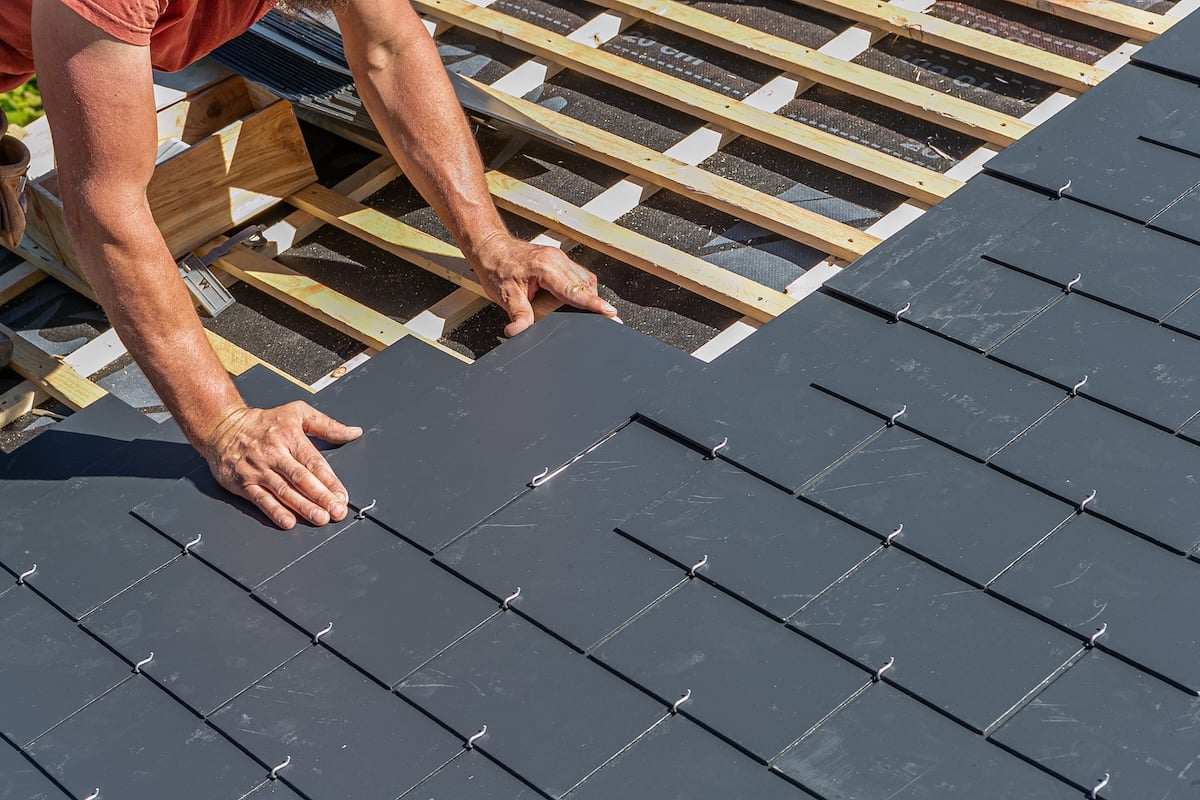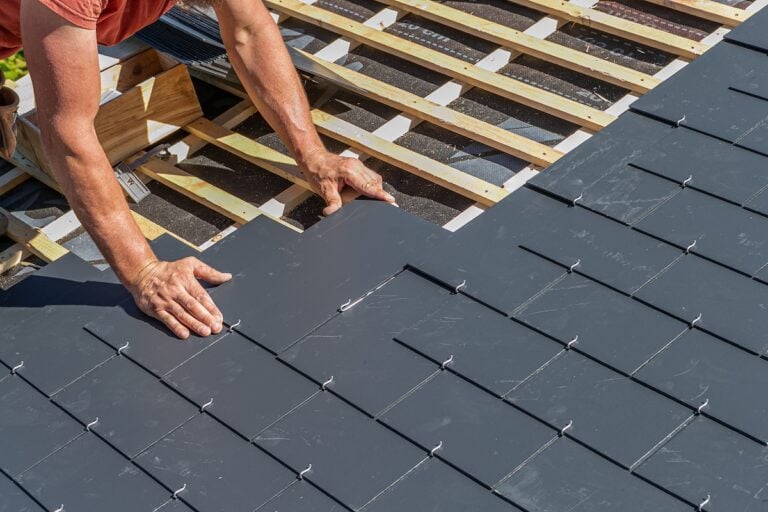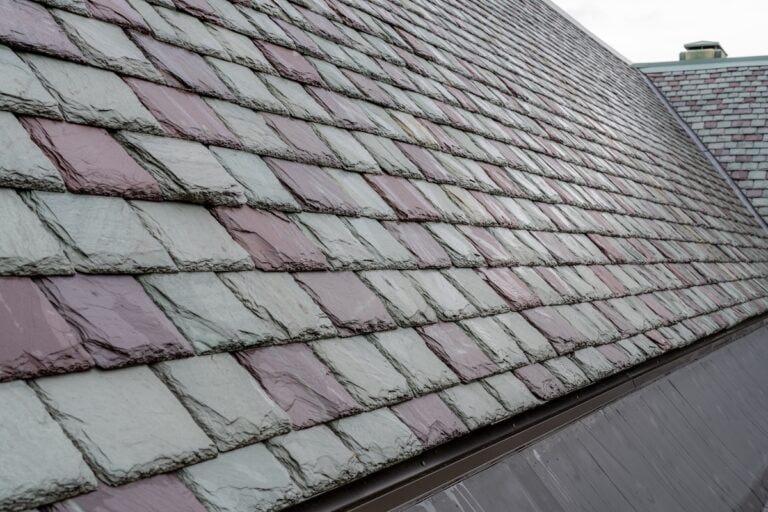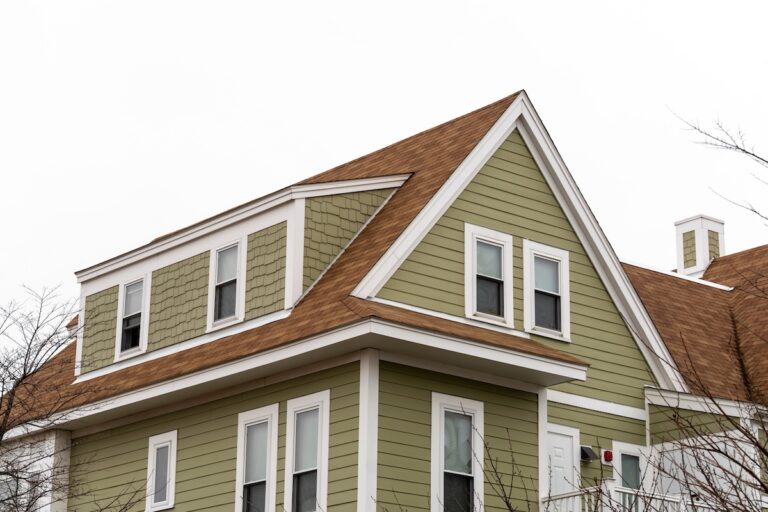Many homeowners ask, “how are slate roofs attached?” when considering this timeless roofing option. Slate is one of the oldest and most durable roofing materials in the world, but it requires specialized installation methods to ensure it performs for a century or more. Unlike asphalt or metal, slate tiles must be carefully secured to withstand weight, weather, and time. For homeowners in Fairfax and surrounding areas, understanding how slate roofs are attached helps explain why choosing an experienced contractor is so important.
- Precision installation: Slate tiles are individually fastened using copper or stainless steel nails.
- Durability in design: Proper attachment ensures roofs can last 75–100 years or more.
- Specialized skill required: Only trained roofers should handle slate installation.
👉 Why Slate Roof Attachment Matters
Slate is heavy, with tiles weighing several hundred pounds per square. Because of this, the way each piece is attached determines not only how the roof looks but how it performs. Incorrect fastening can lead to shifting, breakage, or water leaks. In Fairfax, where storms and seasonal changes are common, the right attachment method is essential to protect your home and preserve slate’s legendary longevity.
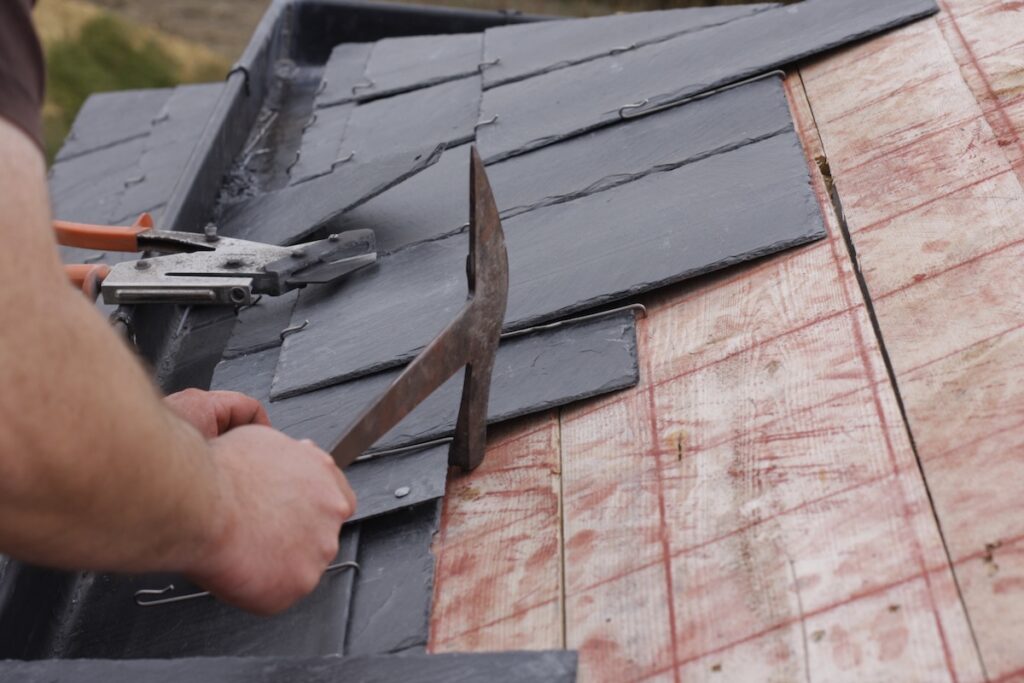
🛠️ Tools and Materials Used for Slate Attachment
Installing slate requires more than just nails and hammers. Specialized tools and materials ensure each tile is secured correctly.
- Copper or stainless steel nails: Corrosion-resistant fasteners that won’t rust over time.
- Wood decking: Typically 3/4-inch sheathing provides a solid base.
- Underlayment: Waterproof layers placed beneath the slate to protect against moisture.
- Slate hammer and stake: Tools used to trim and punch holes in the tiles during installation.
- Flashing materials: Copper or lead flashing seals vulnerable roof areas like valleys and chimneys.
6 Step Process: How Are Slate Roofs Attached?
Slate roof attachment follows a precise process to ensure strength and uniformity.
1. Preparing the Decking
The roof deck must be solid and properly ventilated. Contractors typically use high-quality wood decking since slate cannot be attached directly to lightweight or weak materials.
2. Installing the Underlayment
A waterproof barrier is installed across the decking. In modern installations, synthetic underlayments or felt are commonly used to provide an added layer of moisture protection.
3. Measuring and Laying Out Courses
Slate tiles are installed in rows, or courses. Contractors carefully measure the exposure (the visible portion of each tile) to ensure the roof looks consistent and functions properly.
4. Nailing Each Slate Tile
Each tile is fastened with two nails, driven just enough to hold the slate without cracking it. Nails are typically copper or stainless steel to prevent rust. Overdriven nails can break the slate, while underdriven nails may leave tiles loose.
5. Overlapping for Water Shedding
Tiles are overlapped both vertically and horizontally to create a watertight surface. This layered system prevents leaks and helps slate roofs perform exceptionally well in rainy or snowy climates like Fairfax.
6. Adding Flashing and Ridges
Flashing is installed in valleys, around chimneys, and along edges to direct water away from vulnerable areas. Ridge tiles or hip slates finish the roof, providing both protection and a polished appearance.
⭐️ Common Slate Attachment Methods
While nailing is the most common method, some specialized techniques are also used.
- Nail attachment: Standard method using copper or stainless steel nails.
- Hook fixing: Small copper hooks hold the bottom edge of the slate, often used in areas with high winds.
- Tongue-and-groove systems: Found in some modern synthetic slates, allowing for easier alignment and fastening.
Each method is chosen based on the type of slate, roof design, and regional climate conditions.
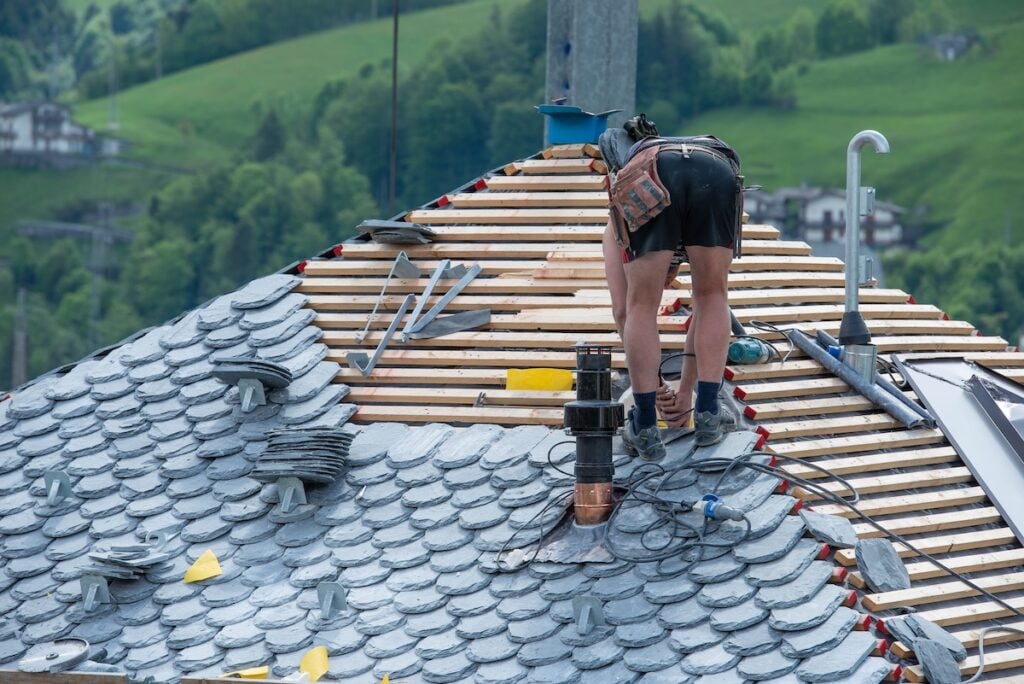
❗️ Slate Roof Attachment Challenges
Slate installation is not a DIY-friendly process. Its weight and fragility require advanced skill. Some common challenges include:
- Tile breakage: Incorrect nailing can crack the slate.
- Alignment issues: Uneven courses can impact both aesthetics and performance.
- Deck reinforcement: Some homes may require structural upgrades to handle slate’s weight.
- Flashing details: Poor flashing is one of the most common sources of leaks.
This is why hiring a contractor with slate experience is non-negotiable.
📋 Comparing Slate Roof Attachment to Other Roof Types
Slate’s installation differs significantly from more common roofing systems.
| Roofing Material | Attachment Method | Difficulty Level | Longevity |
| Slate | Individually nailed with copper or stainless steel; overlapping system | High – requires expertise | 75–100+ years |
| Asphalt Shingles | Nailed in strips using roofing nails | Low – straightforward | 15–25 years |
| Metal Roofing | Fastened with screws or concealed clips | Moderate | 40–70 years |
| Wood Shakes | Nailed individually, often with felt layers in between | Moderate | 30–40 years |
This comparison shows why slate requires specialized training — while its durability is unmatched, the installation process is much more complex.
✅ Why Fairfax Homeowners Choose Slate
In Fairfax, slate remains a popular choice for its timeless appearance and long-term performance. Historic neighborhoods often feature slate roofs, and many modern homeowners invest in slate to preserve character while gaining reliable protection. With proper attachment, these roofs can last a lifetime and add significant value to a home.
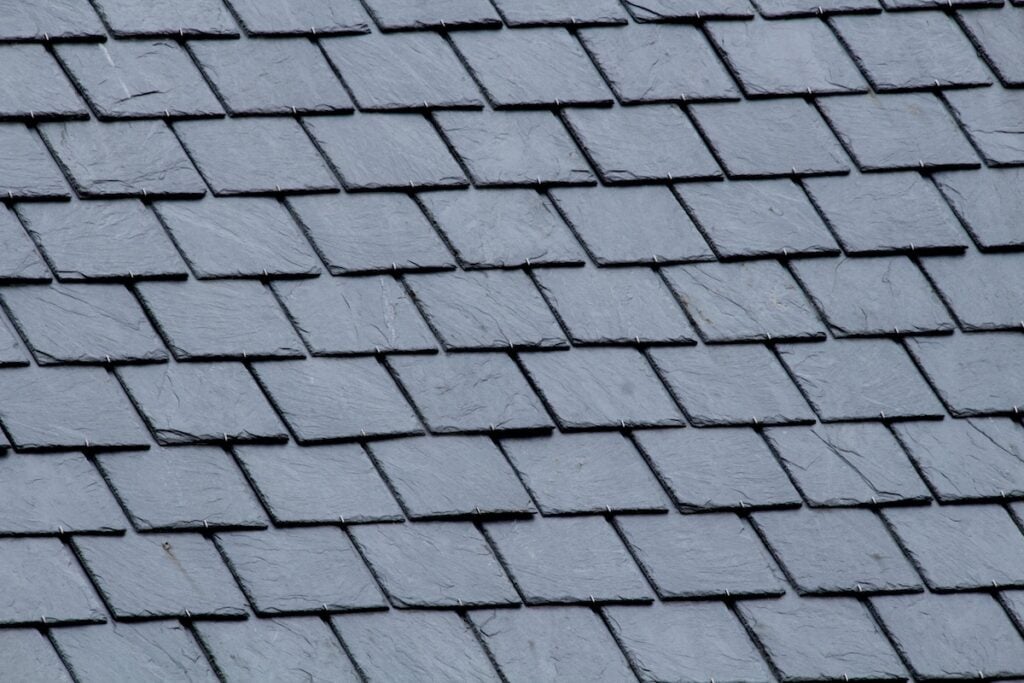
🤝 Slate Roofing Requires Expert Hands
So, how are slate roofs attached? The answer lies in precision craftsmanship, quality materials, and proven methods. Each tile is carefully nailed or hooked into place, overlapped for water protection, and finished with flashing details that keep your home dry and secure.
For homeowners in Fairfax and surrounding areas, choosing Springfield Roofing & Sheet Metal ensures your slate roof is installed with the expertise it demands. Contact us today to schedule a consultation and discover why we’re the #1 choice for slate roof installation and care in Northern Virginia.


